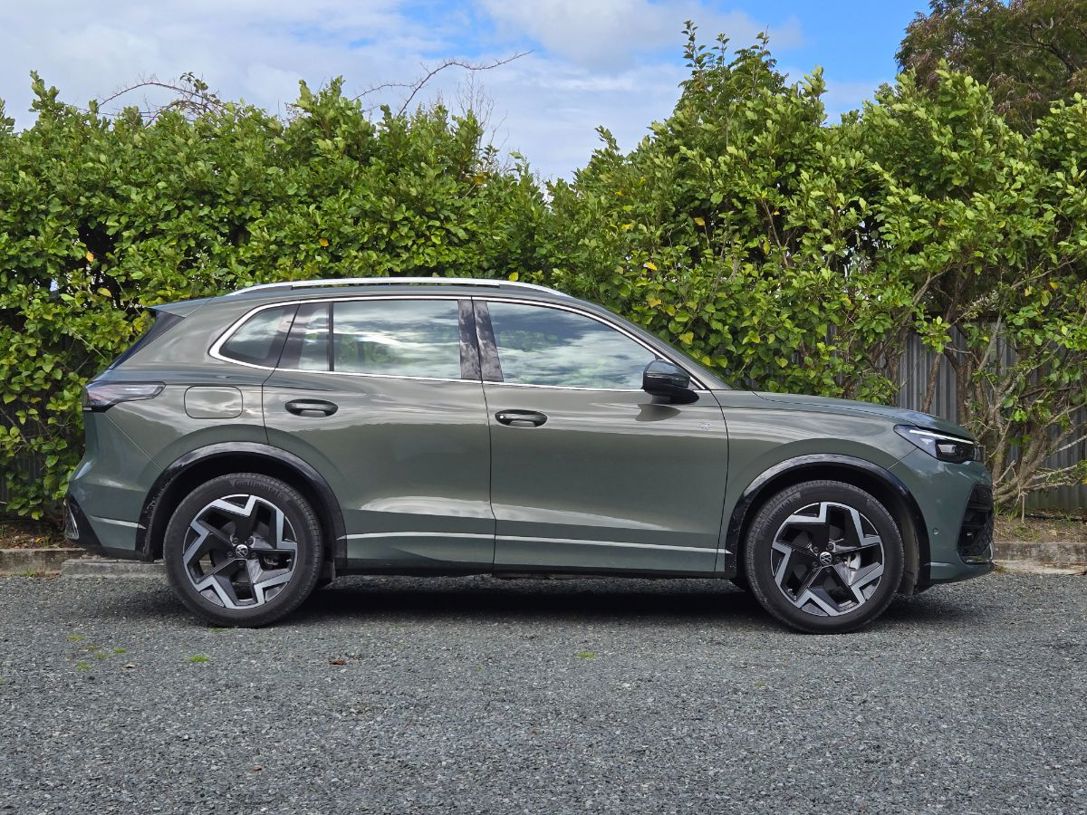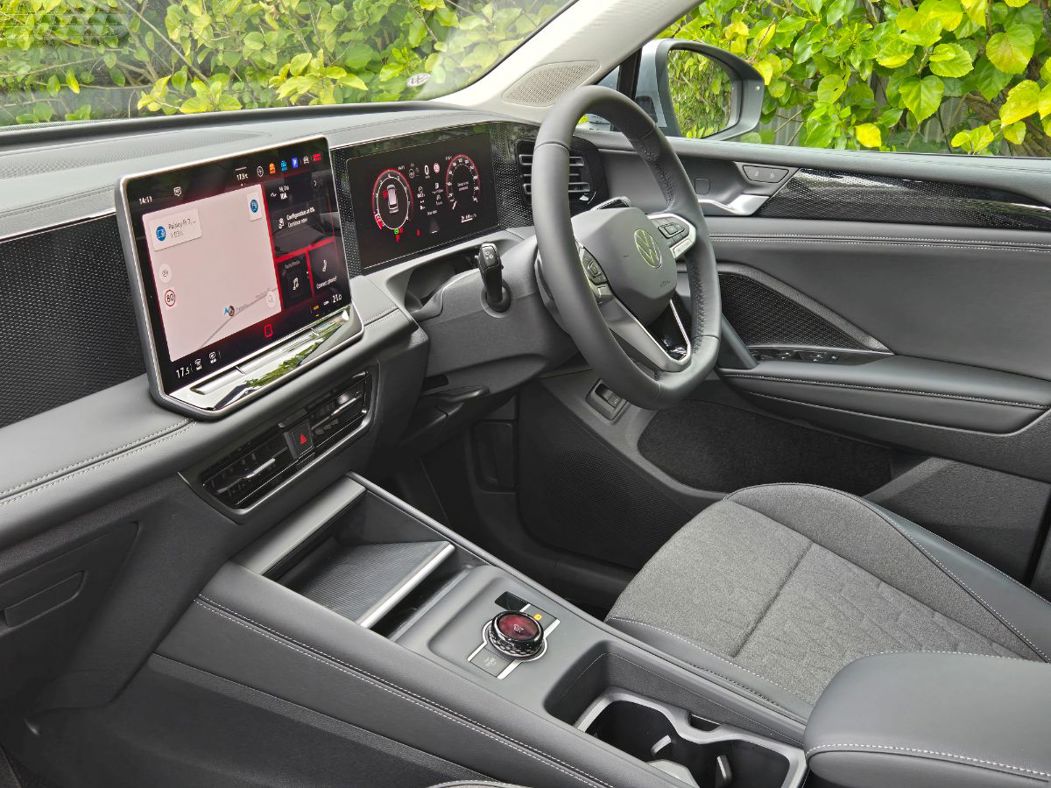In the next year, one-in-three Volkswagen New Zealand new-vehicle sales will be a Tiguan. It’s not only the brand’s biggest-seller: it’s the most popular single model among all VW Group makes in NZ (which includes Skoda, Cupra and Audi).

So even in an overall market that’s expected to be down well over 25% on last year, this is a major new-model launch for VW. Especially as it’s a brand-new model: the third generation since 2007, which means the company has a chance to talk to a very large database of existing owners, but also capture the attention of non-VW owners who might be attracted to something that’s box-fresh.
Not that the formula has changed a whole lot; neither should it really, for such a mainstream model competing in NZ’s single biggest market segment (medium SUVs).
New Tiguan is 30mm longer, but the wheelbase, height and width are virtually identical to the old car. The boot is bigger, though: up by 37 litres to 652l.

We’re getting two models to start with, both powered by VW’s (very) familiar 1.4-litre turbo-petrol engine, with a 7-speed dual-clutch transmission and FWD. You might have been expecting hybridisation of some kind (we kind of were), but that was not on the factory menu for NZ, say local VW people. These models do exist in Europe and VW NZ is currently working through a business case; it’s looking at both 48-volt mild hybrid and plug-in hybrid (PHEV), whichever brings the best value/emissions equation.
In the next year, one-in-three VW NZ sales will be a Tiguan. It’s not only the brand’s biggest-seller: it’s the most popular single model among all VW Group makes.
But right now, Tiguan comes in Life and R-Line specifications, for $54,490 and $61,490 respectively. Life is obviously the entry model, but VW is at pains to point out it’s in no way basic: same powertrain, same-diameter 19-inch wheels and the same safety specification are standard across the range.

The safety stuff includes upgraded iterations of previous tech like forward collision/AEB (now including pedestrian/cyclist), rear cross-traffic alert, and Park Assist Plus, which can now slot your vehicle into a space while you sit and do… pretty much nothing.
The safety package is the same across the range. But the R-Line does look quite a bit fancier than the Life, and it offers some extra garnish.
New safety features include a centre airbag, front cross-traffic alert, oncoming vehicle braking and dynamic road sign display. Those who have suffered unwanted emergency-braking while parking in narrow driveways will be pleased to know the Tiguan now features a switchable “manoeuvre braking” function that cancels the autonomous stopping in close-quarter situations.

The R-Line looks quite a bit fancier than the Life though, and it does offer some extra garnish. There's a unique front fascia, more showy LED lights with an illuminated bar across the grille and 3D tail-lights (the Life still gets LEDs though).
The Tiguan 2WD models feel like a familiar family SUV polished to the nth degree.
R-Line has different exterior detailing, and inside there’s a sports steering wheel and multi-adjustable sports seats with “ArtVelours” upholstery and massage function, plus 30-colour ambient lighting that extends to the passenger-side dashboard and door trims.

There’s a third model on the way, the $79,490 R-Line AWD, which is set to reach showrooms in November. That boasts 195kW/400Nm, even more blingy LED IQ.Light illumination, progressive steering with extra drive profiles, different upholstery and an infotainment screen that steps up from the 2WD models’ 12.9in (which still looks quite large in the car) to 15in.
Note that there’s no full-blown R version in the product plan for the new range, making the R-Line the performance flagship. VW argues it could be considered a worthy replacement for the R, given it has the same torque (less power though), a more high-tech version of Dynamic Chassis Control and the same clever torque-vectoring rear differential. We shall see.

If you don't want the full-phat powertrain, you can add a Touring Package to the R-Line FWD for $6000 that brings some of the AWD equipment such as ergoActive front seats with extra adjustment and heated steering wheel, plus Harman/Kardon audio and panoramic roof. You can add those last two to the AWD as a reduced Touring Package, and exclusive to the flagship model is a Black Pack option.
The 2WD models feel like a familiar family SUV polished to the nth degree. There’s little in the powertrain to wow you, but it gets on with business with admirable efficiency. It’s a strong-feeling and capable platform in the corners; and yes, the Life and R-Line do feel different because although they are both in 19in rims, the latter’s rubber is 20mm wider and 5% lower profile; driving them back-to-back, the R-Line is grippier and you also feel a lot more of the road’s texture coming through. Surprising, when the on-paper specification is so similar between the two.

Tow rating for the FWD models is 1.8 tonnes, while the AWD ups that to 2.3t.
The real appeal of the new Tiguan for buyers is likely to be the safety and comfort/convenience technology. Which brings us to yet another reason this SUV is so significant for VW: it’s the first all-new model to be launched since the maker incited an ergonomic revolution with the Golf 8 and ID range by removing virtually all physical buttons from the dashboard… with extremely mixed results/reception.

As promised, VW has brought some buttons back. The basic architecture of the Tiguan dashboard still picks up the large screen underpinned by touch/slide controls from Golf 8/ID, although they are now illuminated (a major criticism of the previous setup).
But the touch/haptic controls on the steering wheel have been replaced by traditional physical buttons, and there’s now a rotary Driving Experience Control on the console that can handle a lot of different things, from audio volume to drive mode selection to the new mood-based Atmospheres menu, which configures certain colours and sounds in the cabin to evoke anything from Joy (pink instruments!) to Energetic.

There’s another touch of ID in the twist gear-selector, which is mounted on the right-hand side of the steering wheel. Everything else (indiciators, wipers) is on the left stalk, which takes a little getting used to. But it does all make sense.
Tiguan also carries a new operating system and therefore a different infotainment layout. It’s highly customisable and therefore outwardly a teeny bit complicated-feeling to start with (red flag again), but there’s no doubt owners will be able to set this car up exactly the way they want: you can choose where certain tiles go and even change the entire layout of the screen using several templates, meaning you can have your favourite or most often-used functions (climate, for example) front-and-centre for easy access.

There’s some surprise-and-delight hardware too, like a dual mobile phone charging pad (standard on both models) with a lid that closes to conceal the phones. That should please the adults, while the easter-egg tiger (left) and iguana (right) graphics on the rear-side windows will appeal to the kids.
A good product is crucial of course, but VW also reckons brand equity and heritage will play a big part in maintaining the Tiguan’s appeal to Kiwi buyers. Now marching towards two decades since launch in NZ and with consistent popularity, Tiguan has plenty of that.



















